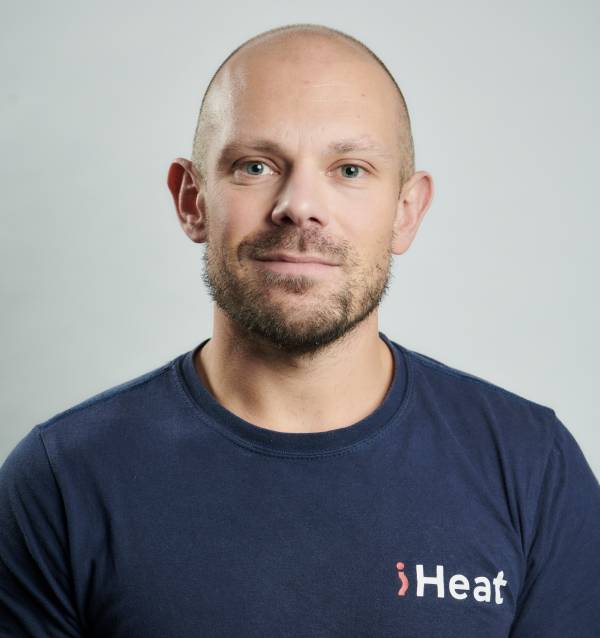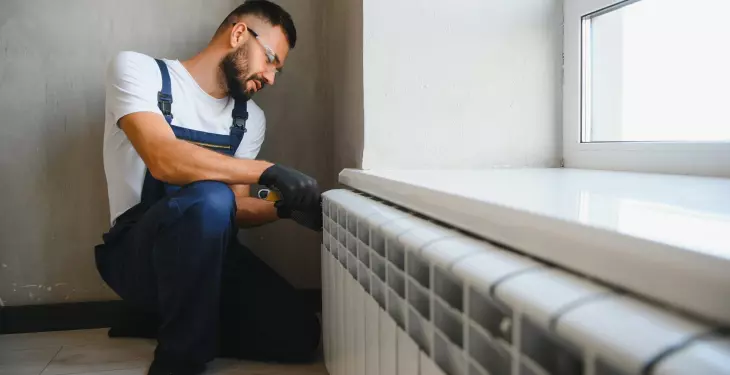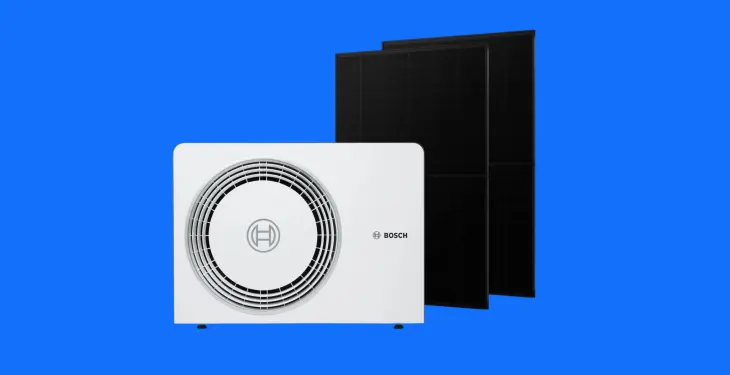

Written by Stephen Day
Gas Safe Engineer
Updated: 1st August, 2025
Heat pumps can be installed in flats, but there are some important factors to consider.
See how much you could save with a heat pump quote.
Heat pumps are becoming a popular choice for heating and cooling in many homes, including flats. Yes, it is possible to install a heat pump in a flat, giving residents access to energy-efficient heating and lower bills. However, there are important factors to consider, such as space, installation costs, and any grants that may be available.
Many people living in flats want ways to save money on energy and reduce their carbon footprint. Heat pumps offer both of these benefits, but the process of installing one in a flat can be different from houses. Understanding how heat pumps work for flats, and what to expect, will help you decide if this is the right option for your home.
Heat pumps can be installed in flats, but there are some important factors to consider. Many flats use either air source heat pumps (ASHPs) or air-to-water heat pumps to heat your home. These systems can provide both heating and cooling.
Space constraints are a key issue, especially for air-source heat pump units. Flats often have limited outdoor areas for the pump to be placed. Usually, ASHPs are easier to fit because they don’t need digging or extensive ground work.
Ground source heat pumps are less common in flats. They require underground pipes, so unless the building already has the needed infrastructure, installation can be difficult or impossible.
Sometimes, planning permission or approval from building management is required. Residents should check local rules and building regulations before starting. Shared buildings may have special restrictions.
Key considerations:
Outdoor space for the unit
Access for maintenance
Permission from building or council
Noise concerns for neighbours
Type | Common in Flats? | Outdoor Space Needed | Special Notes |
Air Source (ASHP) | Yes | Small | Usually allowed, less work |
Ground Source | Rare | Large | Needs existing pipes |
Air-to-water | Yes | Small | Good for shared heating |
It is very important to get advice from a heating engineer. They can check if a flat is suitable for a heat pump and explain any extra steps needed.
The upfront cost to install a heat pump in a flat is usually between £7,000 and £12,000. Prices can go higher depending on the brand and complexity. British Gas and other companies often provide installation services, and there may be government grants to lower the final cost.
Brands like Mitsubishi, Daikin, and Vitocal 100 are commonly used for flats. These brands have a range of models, so households can choose one that fits their space and needs.
Example Cost Table:
Brand | Estimated Cost (with install) |
Mitsubishi | £8,000–£12,000 |
Daikin | £8,500–£13,000 |
Vitocal 100 | £7,500–£11,500 |
Running costs are based on usage and the flat’s insulation. Heat pumps are usually cheaper to run than old gas or oil boilers. Households might see savings on their energy bills, but how much depends on their previous heating system.
Key savings factors:
Changing from electric heating = higher savings
Good insulation = lower running costs
Using off-peak electricity = more savings
Heat pumps also need yearly maintenance but costs for upkeep are usually lower than for a standard boiler. Some installers, including British Gas, offer service plans to help manage these costs.
In summary, while the initial cost is high, a heat pump can lower energy bills and provide reliable heating for many years.
There are several grants that can help flat and apartment owners with the cost of installing a heat pump. The most well-known grant is the Boiler Upgrade Scheme.
This scheme provides up to £7,500 towards the cost of an air source or ground source heat pump. Only one grant is allowed per property. To qualify, the property usually needs to replace a fossil fuel heating system, such as gas or oil.
Applicants must own the property, but flats and apartments are eligible if they meet the set standards. Permission from the freeholder is required if you do not own the whole building.
The heat pump and the installer must be certified under the Microgeneration Certification Scheme (MCS). This guarantees the installation meets government quality standards.
Some energy companies also offer grants through schemes like ECO4. The amount offered can vary.
Grant Name | Amount Available | Key Requirements |
Boiler Upgrade Scheme | £7,500 | MCS certification, replace fossil fuel system |
Energy Company Obligation (ECO4) | Varies | Often income-related, may apply to flats |
Always check if your property type is included before applying. Each grant may have its own rules for flats and apartments.
Heat pumps are becoming a popular choice for heating systems in flats. They offer several clear benefits for both the resident and the environment.
Energy Efficiency:
Air source heat pumps can provide efficient heating and hot water even in smaller living spaces. They often use much less electricity than traditional systems, helping to reduce energy bills. In some cases, tenants could save between 30 and 50% on heating costs compared to night storage heaters.
Lower Carbon Emissions:
Heat pumps use renewable energy from the air or ground, leading to much lower carbon emissions than systems that run on fossil fuels. This makes them a good option for anyone looking for a more low-carbon heating solution.
Year-Round Comfort:
Some heat pumps can both heat and cool a home. This makes it easy to keep the flat comfortable in every season.
Compact Design and Installation:
Air source heat pumps need only a small outdoor space often about one square metre. This is ideal for individuals living in flats where space is limited.
Supports Modern Home Features:
Heat pumps work well with underfloor heating systems. They also reliably supply hot water.
Benefit | Description |
Uses less electricity than old heaters | |
Lower Emissions | Reduces greenhouse gas output |
Fits flats with minimal outdoor space | |
Versatile Heating | Can heat and sometimes cool the home |
Works with underfloor heating, supplies hot water |
Installing a heat pump in a flat is not always straightforward. One major issue is that residents often need permission from a freeholder or building management before any work starts. This can slow down or even stop the project.
Space is also a concern. Heat pumps and their components, such as an outdoor unit and a storage tank for hot water, require room that many flats simply do not have. These units can be bulky and difficult to fit into small living spaces.
Noise can be another drawback. While modern models are quieter, the outdoor unit may still disturb neighbours if space is tight. People living close to the unit are more likely to hear the sound.
Initial cost is high. The price of purchasing and installing a heat pump is much higher than for a standard boiler. Owners also need to budget for changes like bigger radiators or improved insulation.
Getting heating performance right is sometimes tricky. Heat pumps often supply lower-temperature heat than gas or oil boilers. Flats may need to upgrade radiators to get enough warmth during colder months.
Maintenance and warranty conditions can be more complicated for flats. Access for repairs might require special permissions, and some warranties could have restrictions if the system is shared by multiple residents.
There may also be issues with efficiency. Flats in buildings with poor insulation or older construction may not get the full benefits of a heat pump. This can lead to higher-than-expected energy use.
Installing a heat pump in a flat is possible, but the process comes with specific steps and considerations. Most flats use an air source heat pump because they are easier to fit and do not require ground works.
The first step is an assessment. A qualified heat pump installer looks at the building, measures space, and checks if planning permissions are needed. Flats with shared walls or limited outdoor areas need special attention.
After assessment, the installer recommends a suitable heat pump model. They will talk about noise levels, where to put the unit, and how pipes will run inside and out. In blocks of flats, it may be necessary to get agreement from neighbours or the building manager.
Key Steps in the Installation Process
Step | What Happens |
Site Visit | Installer surveys the flat and discusses options |
Choosing a Heat Pump | Select the best heat pump model for the flat's needs |
Checking Permissions | Confirm if landlord or managing agent approval is required |
Preparing the Flat | Clear the space, and prepare for any inside or outside work |
Installation | Installer fits the heat pump, connects pipework, and sets up controls |
Testing and Handover | System is tested to ensure it works. Installer explains how to use it |
A typical installation can take from a few days up to a week, depending on the flat and its layout. Professional installers also provide a demonstration, so residents know how to adjust the system and maintain it properly.
A heat pump can work well in a flat, but it is not always the best fit for everyone. There are several things to think about before installing one.
Space is important. Heat pumps, especially air source types, need enough outdoor and indoor space for the unit and pipes. Some flats have a balcony or access to an outside wall, while others may not.
Noise is another factor. Most modern heat pumps are quiet, but older models can be noisy. If you live in a block with strict noise rules, you should check the sound levels first.
Some flats may have planning or building rules that affect heat pump installation. It is best to check with your landlord or management company before making plans.
The following table can help decide if a heat pump might suit your flat:
Consideration | Suitability in Flats |
Outdoor Space | Needed for unit |
Planning Restrictions | May apply |
Noise Level | Low in modern models |
Energy Savings | Usually high |
Upfront Cost | Can be significant |
Listing some key pros and cons can also help:
Pros:
Lower energy bills
Lower emissions
Efficient in well-insulated buildings
Cons:
High upfront cost
May need permission
Space requirements
Each flat is different. Some are ideal for a heat pump, while others have too many restrictions. Looking at property type, building age, and heating needs will help make the right choice.
Last updated: 1st August, 2025

Written by Stephen Day
Gas Safe Engineer at iHeat
Stephen Day is a Gas Safe registered and FGAS certified engineer with over 20 years of hands-on experience in the heating, cooling, and renewable energy industry, specialising in boiler installations, air conditioning, and heat pump systems.
LinkedInArticles by Stephen Day are reviewed by iHeat’s technical team to ensure accuracy and reliability.

05th December, 2025
Most homes need some radiators upgraded for a heat pump, but usually not all of them.
 Read Article
Read Article

05th December, 2025
Most homes can lower heating costs by combining air source heat pumps with solar panels.
 Read Article
Read Article

28th November, 2025
High temperature heat pumps work like boilers without needing radiators, but they cost mor...
 Read Article
Read Article
No obligation. Takes less than 60 seconds.